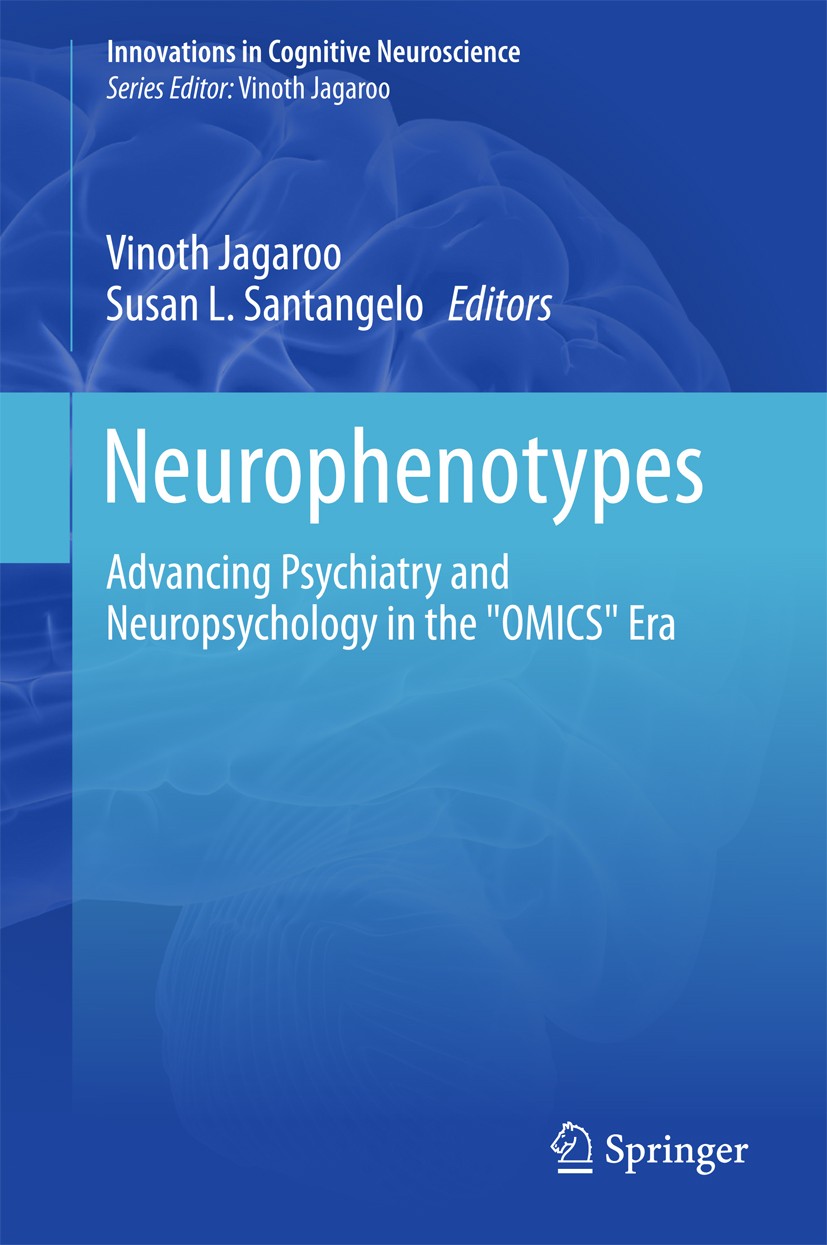| 书目名称 | Neurophenotypes |
| 副标题 | Advancing Psychiatry |
| 编辑 | Vinoth Jagaroo,Susan L. Santangelo |
| 视频video | http://file.papertrans.cn/665/664345/664345.mp4 |
| 概述 | Critically appraises clinical neuroscience research at the intersection of genomics, phenomics, and other ‘omics’ disciplines..Explores neurophenotypes as operational constructs of brain-behavioral do |
| 丛书名称 | Innovations in Cognitive Neuroscience |
| 图书封面 |  |
| 描述 | .The interest in ‘biomarkers’ seen across a spectrum of biomedical disciplines reflects the rise of molecular biology and genetics. A host of ‘omics’ disciplines in addition to genomics, marked by multidimensional data and complex analyses, and enabled by bioinformatics, have pushed the trajectory of biomarker development even further. They have also made more tractable the complex mappings of genotypes to phenotypes – genome-to-phenome mapping – to which the concept of a biomarker is central..Genomic investigations of the brain are beginning to reveal spectacular associations between genes and neural systems. Neural and cognitive phenomics are considered a necessary complement to genomics of the brain. Other major omics developments such as connectomics, the comprehensive mapping of neurons and neural networks, are heralding brain maps of unprecedented detail. Such developments are defining a new era of brain science. And in this new research environment, neural systems and cognitive operations are pressed for new kinds of definitions – that facilitate brain-behavioral alignment in an omics operating environment. .This volume explores the topic of markers framed around the |
| 出版日期 | Book 2016 |
| 关键词 | Behavioral genetics; Behavioral phenotype; Cognition; Cognitive dysfunction; Cognitive phenotype; Conting |
| 版次 | 1 |
| doi | https://doi.org/10.1007/978-1-4614-3846-5 |
| isbn_softcover | 978-1-4939-7932-5 |
| isbn_ebook | 978-1-4614-3846-5Series ISSN 2509-730X Series E-ISSN 2509-7318 |
| issn_series | 2509-730X |
| copyright | Springer Science+Business Media LLC 2016 |
 |Archiver|手机版|小黑屋|
派博传思国际
( 京公网安备110108008328)
GMT+8, 2025-12-31 16:48
|Archiver|手机版|小黑屋|
派博传思国际
( 京公网安备110108008328)
GMT+8, 2025-12-31 16:48


